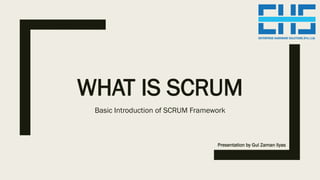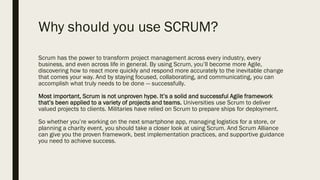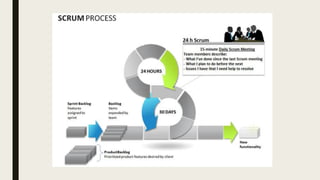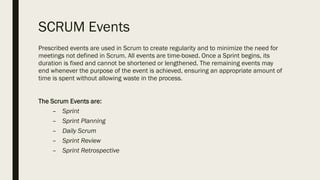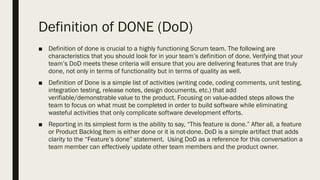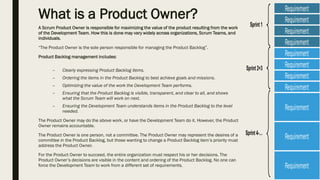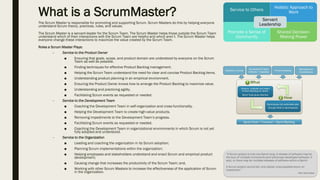This document provides an overview of the Scrum framework, highlighting its role within Agile methodologies and its effectiveness in project management. It describes the components of Scrum, including roles (Product Owner, Scrum Master, Development Team), events, and artifacts, while emphasizing the benefits of its implementation for delivering quality products efficiently. The document also outlines the importance of collaboration, adaptability, and a well-defined 'Definition of Done' in ensuring the success of Scrum teams.
